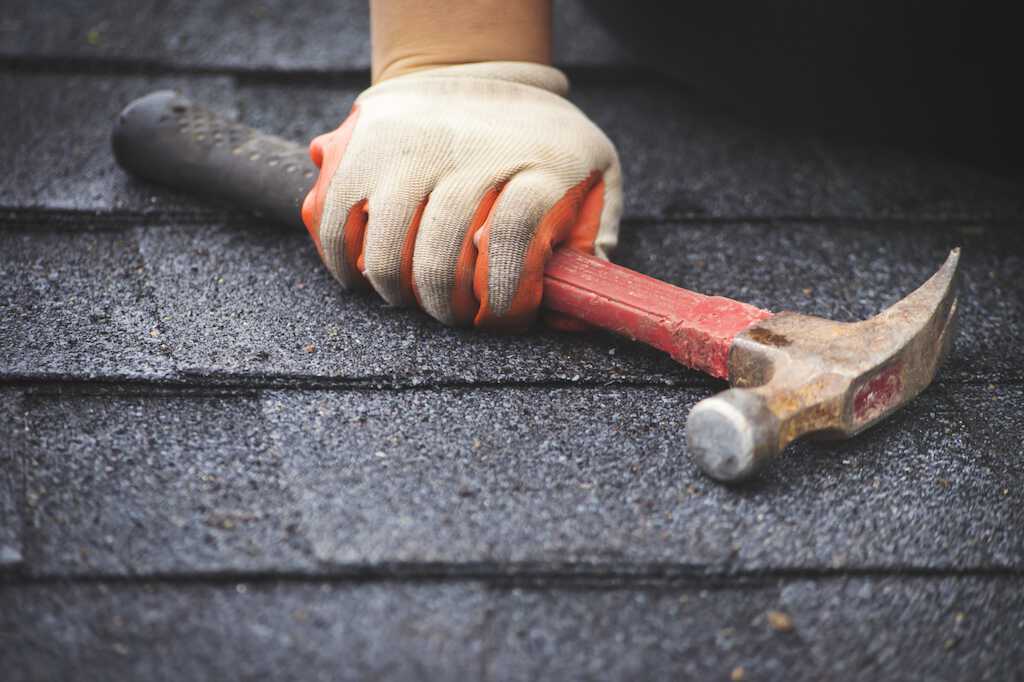Your Guide to Winter Weather Roof Leaking

Winter is coming and that means it’s time to make sure that your roof isn’t leaking.
Roof leaks are always a pain, but as the cold weather rolls in it’s time to double down and avoid rain getting in.
The question for most homeowners is simple: what’s the best way to avoid their roof leaking in the winter?
If you’re not yet prepared then read on and we’ll show you the how and why to prevent untimely puddles in the home this cold season.
Why is Winter So Harsh on Roofs?
Winter is always the worst time of year for your shingles.
There are a few different reasons, and it’s not just an increase in rainfall.
Ice dams, for instance, can form when the peak of your roof is warmer than the lower portions. This warmer water will then run to the gutters and freeze, eventually causing the gutter to overflow.
This will cause water to pool underneath shingles and expose the wood underneath to excessive amounts of moisture rather than the water running into your gutters.
If you’re seeing icicles on the gutters then it’s time to take care of the problem.
Since water expands when it freezes even condensation can cause serious problems when the daytime condensation freezes overnight and expands in small cracks and under shingles.
You may also have condensation in the attic which exposes the wood to moisture and all of the problems associated with it. This is usually caused by improper ventilation.
Overall, winter is a prime time for your roof to take damage.
Excessive amounts of snow on the roof can also expose previous problems as it melts on warmer winter days. These leaks may have already been there but just now become apparent as they’re exposed to more moisture.
Winter’s cold temperatures and the freeze/thaw cycle are the biggest culprits of leaks through the cold months. It can both expose old problems and create new ones.
What Can I Do About My Roof Leaking in Winter?
The most important thing that you can do is remain vigilant. Most of the problems which come with winter can be handled yourself, provided that you get to them before they cause serious problems.
Ice dams are generally visible from the ground and are the most common cause of winter leaks. You can break them up from the ground with a long-handled rake but we don’t recommend chiseling away at them.
You may cause more problems than you solve if you’re not careful.
There’s no easy way to prevent them if you have improper ventilation and insulation in your attic.
It’s mostly just a matter of keeping an eye on them and scraping away what you can unless they get bad enough you need professional help. Ideally, you’ll be able to keep the attic below freezing temperature, which should act to prevent ice dams from building up in the first place.
Many interior leaks are actually condensation problems. Ice can freeze in uninsulated vents, such as those coming from the bathroom, or condensation in the attic can cause water to drip.
Fortunately, these can be solved by making sure that vents and the attic are properly insulated, which will prevent moisture in the air from condensing. Take a peek in the attic throughout the season to make sure there are no problems.
A well-constructed home is one that will experience fewer problems, but not all problems can be solved easily in the home. Your best bet is to make sure that you have preventative measures in place before winter is in full swing.
When Do I Need to Call a Professional?
When actual roof damage occurs, it’s time to call in a professional. It’s not something which you should try and take care of yourself.
Ice dams are a notorious cause of winter roof damage. The pooling water and subsequent expansion as temperatures get underneath freezing again can separate shingles and get into the timber which holds the roof up.
There is no quick fix there, you’ll need to call someone. Ideally, you’ll call a roofer before the ice dam has caused serious damage.
Likewise, condensation problems may be merely irritating at first but that harsh freeze/thaw cycle that occurs in winter can turn it into a serious problem. Finding a residential roofing specialist is your best defense.
Actual leaks should always be examined by a professional roofer. They’re not something that is easily fixed by the homeowner.
If you’re particularly savvy and in need of repairs anyways you may want to get a self-sealing membrane installed underneath your new shingles as well. This will help keep leaks to a minimum and protect the structure underlying the roof.
Overall: most of the problems which winter brings with it are a cause for professional concern rather than simple amateur efforts. Don’t give in to the temptation to save a few bucks and risk major damage to your roof.
Handle Your Winter Roof Leaks!
Winter is hard on our roofs, but your roof leaking can be stopped through a combination of effort at home and professional maintenance. When things start to look bad, however, it’s always time to consult with a contractor rather than trying to DIY the issue.
The risk of causing more problems is just too great.
If you’re looking to make sure that your roof is winter-ready then give us a call and we’ll make sure that you’re able to get through the next cold snap worry-free!
